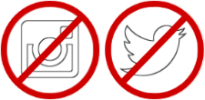Blog / 2020 / How to Love Your Art #12: Take a Break from It Now and Again
April 20, 2020
It feels weird to talk about this right now when so many people are on an enforced break from everything that they love in their daily lives, but the truth is that sometimes you need absence in order to make your heart grow fonder.
The painting featured in the video already has a forever home. That said, if you want prints or other pretty items with this image, check out my Redbubble shop! The completed alphabet book that it is a part of will be available later this year.

B Is for Bunny Rabbit
2020
acrylic on panel
14 x 14 inches
The first names embedded in B Is for Bunny Rabbit are Baden, Barbara, Becca, Beckett, Bella, Ben, Bentrice, Bertram, Beth, Bharti, Blanca, Blaze, Blue, Bodhi, Bong-Cha, Botham, Breizh, Brett, Bridget, Bridgette, Brie, Brittney, Brooke, Bruce, Bryan, and Buffy.
For more about how to love your art, check out these posts:
- Figure out what art you find boring.
- Learn to appreciate other artists’ work.
- Talk about your art.
- Determine what parts of it make you happy.
- Figure out what worries you most.
- Decide on what’s right and wrong in your art.
- Play with your self-expression versus communication ratio.
- Document your work.
- Inventory your pieces.
- Give your art away.
- Charge a lot of money for your work.
- Don’t claim the copyright on your work.
- Don’t let jerks near it.
- Introduce your art to all your favorite people.
- Celebrate your work.
- Define the word “love.”

Here’s what I’ve been reading since my last alphabet book update:
Maid by Stephanie Land
Government assistance is better than assistance from a person’s immediate community. For one thing, not everyone has a community that can pitch in financially when they’re struggling. For another, the more resources we pool together, the more we can accomplish. If you disagree with these statements—if you think that poor people are using up more of your tax money than wealthy corporations—please read Maid.
No Walls and the Recurring Dream by Ani DiFranco
This memoir felt a bit disjointed, but I loved hearing about DiFranco’s life, practice, and ideas around money and art. And I especially related to this idea: “My skin became...not so much tougher but more elastic. I learned to absorb people’s anger and bounce it back into the world in the form of poems and songs.”
Unorthodox by Deborah Feldman
After watching the Netflix series based on this autobiography, I decided to read it, and I’m so glad I did. Both the series and the book are excellent, and they’re different enough for them to both be completely engrossing. That said, I feel I should warn you that the book makes the series feel like a heavily sanitized version of life in the cult of Hasidic Judaism.
Cam Girl by Isa Mazzei
Listening to this memoir of an online sex worker at the same time as I was reading Unorthodox was pretty trippy. It made perfectly clear that the patriarchy has just one flavor (evil) no matter how seemingly unrelated communities may choose to package it differently.
The Subtweet by Vivek Shraya
This novel perfectly captures what it’s like to be an artist in the age of social media, while also delving into questions of originality and ownership both in art and in life. This is one of the few times that a fictional account of the creative process has felt true to me, to the point where it made me love art even more than I already do. I adored The Subtweet.
Circe by Madeline Miller
I used to be totally obsessed with Greek, Roman, and Norse mythology, delighting in everything from Neil Gaiman’s American Gods to Jean-Paul Sartre’s Les Mouches, but I guess it’s not really my thing anymore. I liked Circe alright, but it didn’t thrill me.
Maybe this post made you think of something you want to share with me? Or perhaps you have a question about my art? I’d love to hear from you!
To receive an email every time I publish a new article or video, sign up for my special mailing list.
If you enjoyed this post, Ko-fi allows you to donate. Every dollar you give is worth a bajillion to me!



